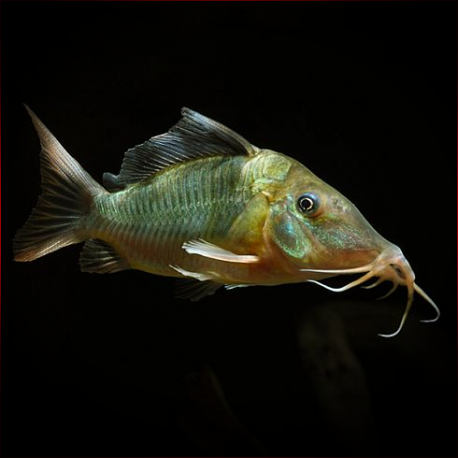More info
Datasheet
| Minimum Tank Size | 250 litres / 66.04 US gallons |
| Maximum Size | 10.0cm / 3.94inches |
| Temperature | 20°C / 68.00°F - 26°C / 78.80°F |
| Hardness | 2.02dgH / 36ppm - 12.05dgH / 215ppm |
| pH | 6.0-7.5 |
General Description
The Corydoras Multiradiatus, also known as the Hognose 'Brochis,' belongs to the family Callichthyidae and is classified under the order Siluriformes. This species was previously part of the Brochis genus and is characterized by its extended snout and a higher number of dorsal fin rays compared to other similar species within the Corydoras genus.
Aquarium Setup
For optimal care, it is recommended to maintain Corydoras Multiradiatus in groups of at least 6-8 individuals in a tank with a minimum capacity of 250 liters. A substrate of fine sand or clean rounded gravel, along with suitable decor for cover, should be provided in the aquarium. Refer to the table for specific water parameter requirements.
Behaviour
These catfish are known to be peaceful and gregarious creatures that thrive in the company of their own kind. They are often seen foraging at the bottom of the tank and are facultative air breathers, occasionally rising to the surface to gulp air.
Feeding and Diet
Corydoras Multiradiatus are omnivores and accept a variety of sinking dried foods, along with live and frozen options like chironomid larvae and Tubifex. A balanced diet is crucial for their well-being, as they should not solely rely on leftovers from other tank inhabitants.
Reproduction & Dimorphism
Details on the reproduction of Corydoras Multiradiatus remain unreported. Adult females of this species are typically rounder, higher-bodied, and slightly larger than males.
Habitat and Distribution
Native to tributaries of the northwestern Amazon basin in Ecuador and Peru, Corydoras Multiradiatus prefers smaller tributaries and still bodies of water such as backwaters and oxbows for habitat. They are usually found in aggregations in these environments.

